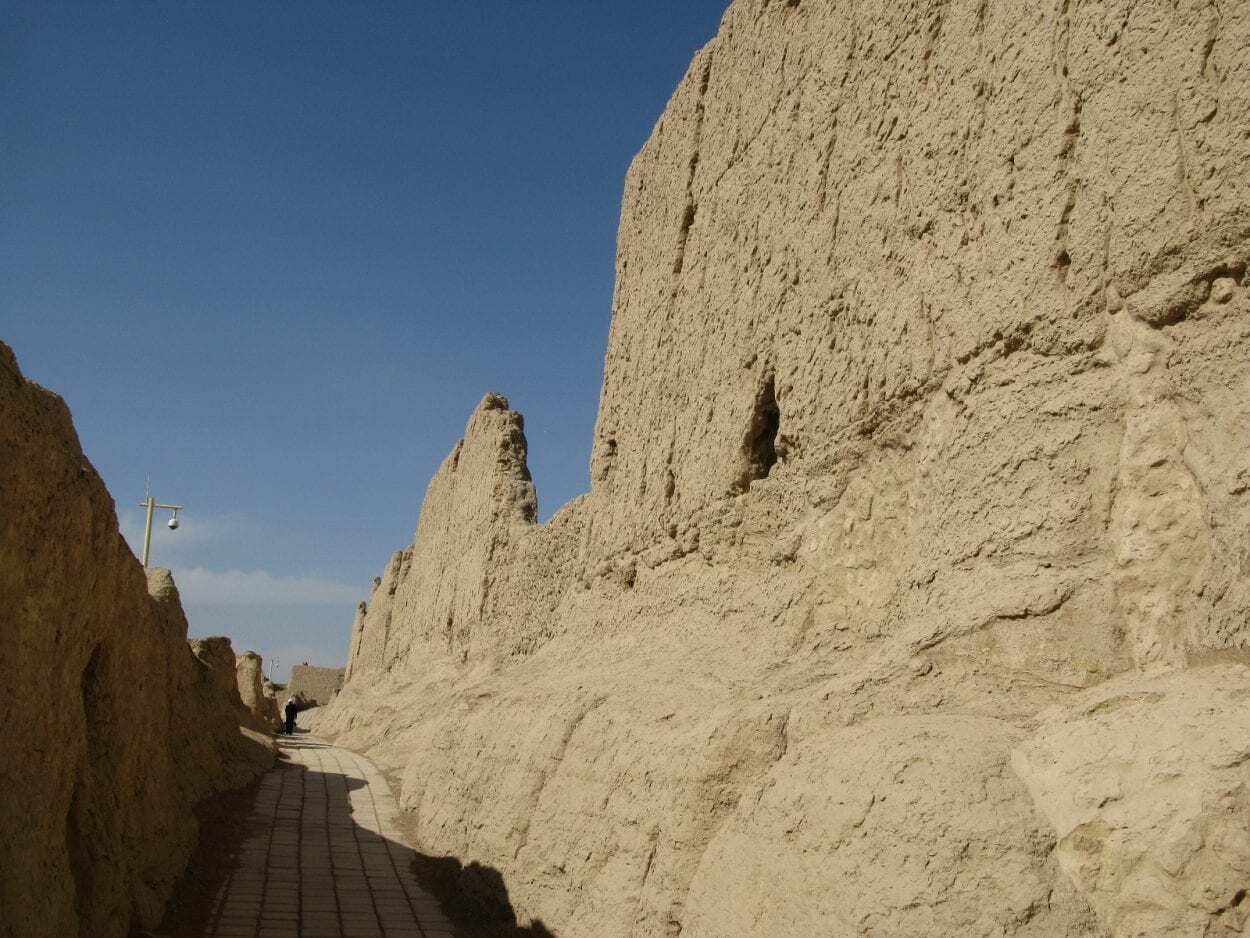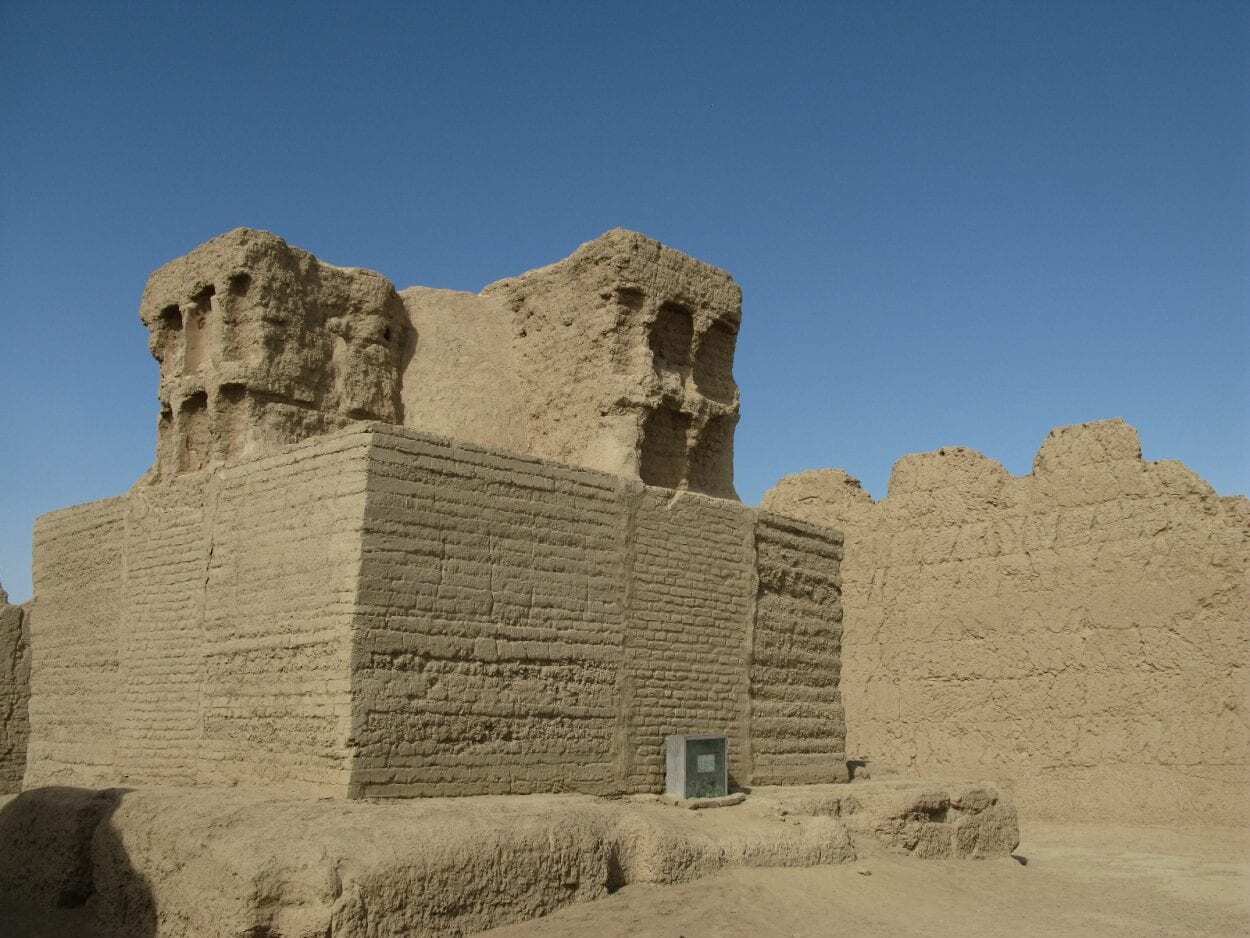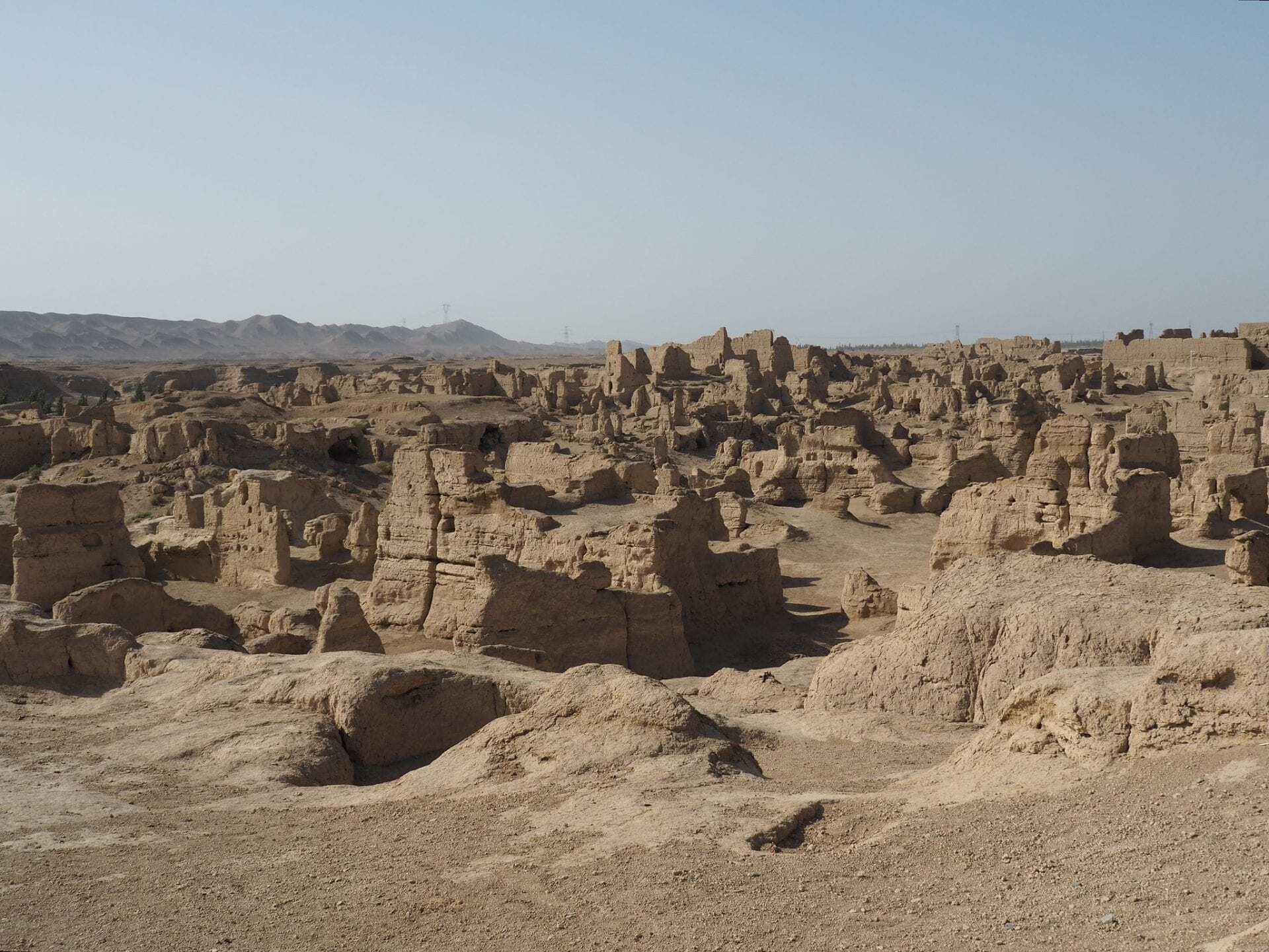Jiaohe, also called Yarkhoto and Yarghul is an ancient ruined city and fortress, located on a land plateau shaped like a willow leaf in the Xinjiang Uyghur Autonomous Region of China.
The city served as the capital of the Anterior Jushi Kingdom from 108 BC to 450 AD and was an important centre of trade on the silk road for facilitating exchanges between the east and west.
The Jushi first emerged in the Turpan basin, a fault-bounded trough in the eastern part of the Tian Shan mountain range, centred on the Ayding Lake which is the sixth-lowest exposed elevation on the Earth’s land surface.
During the 1st century BC, the Han defeated the neighbouring forces of the nomadic Xiongnu confederation at the Battle of Jushi during the Han-Xiongnu War, resulting in the Jushi territories being divided into two states: “Anterior Jushi” (also called “Nearer Jushi”) being dominated by the Han and centred on Jiaohe, and “Posterior Jushi” (also called “Further Jushi”) under Xiongnu control centred on Yuli or Yulai.

The name “Jiaohe” first appeared in contemporary literature of the Han during the 2nd century BC, with the city being loosely translated as a “castle city of the Jushi Kingdom”.
From 450 AD till 640 AD, the city became the Jiao prefecture in the Tang Dynasty and was later established as the seat of the “Protector General of the Western Regions”. By the early 9th century, Jiaohe was the prefecture of the Uyghur Khaganate, a tribal confederation under the Orkhon Uyghur until it was conquered by the Kyrgz by the end of the century.
At its peak, Jiaohe had a population of 7,000 inhabitants, and was divided into two residential districts with structures mainly built from earthen (soils and clays), consisting of rammed earth buildings, mud stack buildings, and mud-brick buildings. A third district was reserved for Buddhist sites such as temples and stupas, with associated tombs, graves, and Buddhist caves.

Because the city is bordered by cliffs reaching to heights of 30 metres, it was always assumed that Jiaohe had no defensive walls to protect the inhabitants, however, archaeological surveys revealed a low protective parapet reaching heights of 1.5 metres along the cliff edges, as well as lookout posts.
In the middle of the 14th century, the Mongol Yuan Empire collapsed, and the region was embroiled in rebellion during the Yuan Dynasty. This resulted in the castle city being abandoned and left uninhabited, except for a small settlement that inhabited the ruins during the Min Era.
Header Image Credit : Hotel Kaesong – CC BY-SA 2.0





